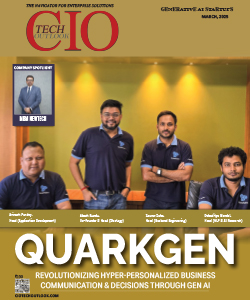National Technology Day 2025: Powering Progress Through Innovation
CIOTech Outlook Team
Monday, 12 May, 2025
Indra, Audi & Qualcomm Pilot C-V2X Technology to Transform Toll Payments
CIOTech Outlook Team
Monday, 12 May, 2025
Data Management Strategies for AI-Driven Innovations in Banking
Dr. Parul Naib, Head - Data Science and AI, Reserve Bank Innovation Hub
Saturday, 10 May, 2025
Apple is developing custom chips for smart glasses & AI servers: report
CIOTech Outlook Team
Saturday, 10 May, 2025
Amazon Unveils Robot to Rival Tesla, With Perks for Its Employees
CIOTech Outlook Team
Friday, 09 May, 2025
Tredence, Snowflake Launch AI Tools for Auto Manufacturing, Supply Chain
CIOTech Outlook Team
Thursday, 08 May, 2025
SKF Teams Up with Carnegie Clean Energy to Develop Wave Power Tech
CIOTech Outlook Team
Thursday, 08 May, 2025
ideaForge, Resonia to Partner on Advancing Drone and Robotics Tech
CIOTech Outlook Team
Thursday, 08 May, 2025
Syngenta, Al Dahra Join Forces to Boost Agri-Tech in Four Countries
CIOTech Outlook Team
Thursday, 08 May, 2025













